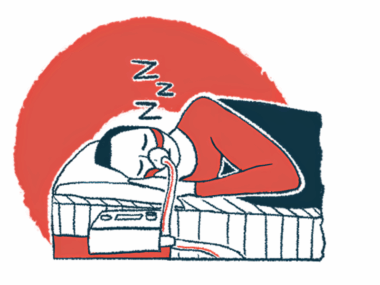Rituximab Equally Effective in MG Patients 65 or Older, Analysis Finds
Written by |

One year of rituximab therapy was effective in people with myasthenia gravis (MG) ages 65 or older, with no significant differences in response or safety seen in this older patient group relative to younger patients, an analysis of medical records found.
“Rituximab should be considered in the treatment paradigm in older patients and in non-refractory [treatable] MG patients of any age,” the researchers wrote.
The analysis, “Retrospective Analysis of Safety and Outcomes of Rituximab for Myasthenia Gravis in Patients ≥ 65 Years Old,” was published in the journal Muscle & Nerve.
Rituximab is a biological therapy, marketed under the brand name Rituxan in the U.S. and Mabthera in Europe, designed to suppress immune B-cells that generate antibodies. It is approved to treat autoimmune conditions such as rheumatoid arthritis, characterized by immune attacks on the lining of the joints.
The therapy is also being investigated as a potential treatment for MG to suppress the autoimmune response targeting the neuromuscular junction, where nerves connect to the muscles they control.
Although rituximab is not approved to treat MG, some patients are using the therapy off-label. However, studies including MG patients 65 years of age and older suggest the efficacy of rituximab is variable.
To provide further supporting data, a team led by investigators based at Brigham and Women’s Hospital in Boston, examined the medical records of 40 MG patients treated with rituximab — including 14 who were 65 or older (mean age, 68.9) — and compared its safety and efficacy in this group with the 26 younger patients (mean age, 39.9).
Apart from age, there were no significant differences between the younger and older patient groups regarding the use of MG treatments, disease duration, and the time since thymectomy — the surgical removal of the thymus gland to stop the production of disease-causing antibodies.
MG severity at the time of starting rituximab (baseline measure) was assessed using the Myasthenia Gravis Foundation of America Clinical Classification (MGFA-CC) system, dividing MG into five main classes and several subclasses to identify patients who share distinct features of severity.
The MGFA post-intervention status (MGFA PIS) measured treatment response. The study’s primary goal was the proportion of participants achieving an “improved” or better status on the MGFA PIS, defined by “minimal manifestations,” “pharmacologic remission,” or “complete stable remission.”
Overall, the analysis revealed that 30 patients (76.9%) achieved MGFA PIS “improved” or better status after one year of rituximab, with no significant differences seen between those younger than 65 and those age 65 and older.
After one year of treatment, 15 patients (38.5%) reached an MGFA PIS “minimal manifestations” or better status, with no differences between the two age groups.
After six months, 24 (60%) patients had already scored an MGFA PIS “improved” or better status. Again, the outcomes were similar between those who were older or younger.
The impact of rituximab therapy did not significantly differ between patients classified with MGFA class 1/2, and those with MGFA 3 or higher (indicating more severe disease) before treatment began.
When divided by age and the specific autoimmune target within the neuromuscular junction (acetylcholine receptors or muscle-specific kinase), there were no significant differences in outcomes. Participants who received a second course of rituximab before the 12-month follow-up did not have a better outcome.
Overall, the median daily dose of the immunosuppressive MG therapy prednisone significantly decreased from 20 mg at baseline to 10 mg at one year. The median prednisone dose dropped from 20 mg to 9 mg for those 65 years and older, and from 20 mg to 10 mg for patients younger than 65 years.
After one year of rituximab treatment, 12 study participants stopped one maintenance immunomodulatory therapy, with nine stopping either plasmapheresis (plasma exchange) or intravenous immunoglobulin infusion (IVIG), both design to remove disease-causing antibodies in the bloodstream. A further eight patients lowered their doses of immunomodulatory therapy.
A statistical analysis found the age of the patient when first prescribed rituximab did not predict outcomes.
However, those who failed to respond to MG treatments (refractory MG) were significantly less likely to achieve MGFA PIS “minimal manifestations” or better status after one year of rituximab.
Notably, one year of rituximab as the only treatment (monotherapy) was significantly more common among patients who responded to MG therapy than those who did not (55.6% vs. 7.1% in the refractory MG group).
Six participants died during follow-up. One 64-year-old patient developed lymphopenia, or low levels of white blood cells, within one day after the first rituximab dose, which led to a systemic inflammatory response syndrome and multiple organ failure. Another 71-year-old was diagnosed with rectal cancer four months after treatment initiation, and was lost to the study four months later; date and cause of death were unknown.
The four other deaths were not related to MG or rituximab. Among other study participants, no one stopped rituximab due to adverse events. Severe infusion reactions in 14 patients required a change to the infusion rate, but all completed the regimen.
Eleven out of 19 experienced serious adverse events (SAEs) related to rituximab; three were 65 years and older, and eight were younger than 65 years. Of these, beyond the death of the 64-year-old, 10 required hospitalization for infections.
“For comparison, 18 of 40 included patients (45%) had experienced SAEs while receiving other maintenance therapies prior to rituximab which either led to hospitalization or required therapy cessation,” the researchers wrote.
Overall, the findings “that patients 65 years old [and older] were equally likely to achieve good MG outcomes without increased SAEs suggest that older patients may be a subgroup that could benefit,” they added.
“This work supports use of rituximab, and future study of other anti-B cell therapies, in older and/or non-refractory MG patients,” the team concluded.






Leave a comment
Fill in the required fields to post. Your email address will not be published.